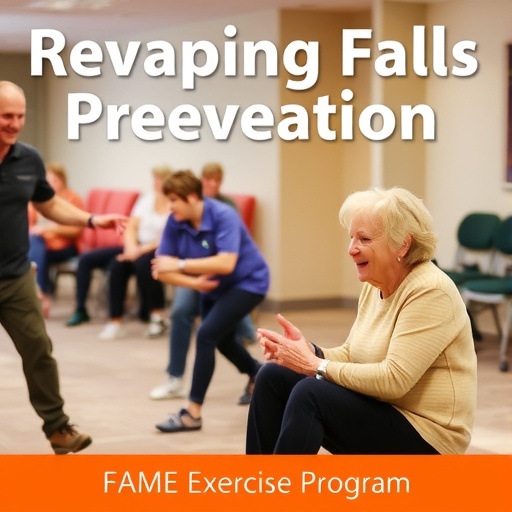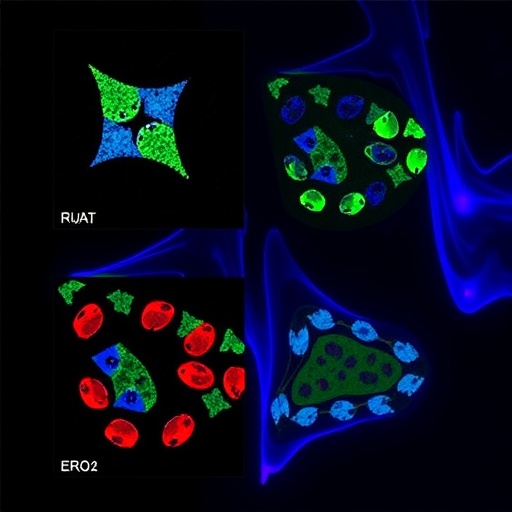In a groundbreaking study published in BMC Health Services Research, researchers have delved deep into the implementation and delivery of the Falls Management Exercise programme (FaME). This innovative exercise initiative aims to address the increasingly pressing issue of falls among older adults. As populations age, the prevalence and consequences of falls have become a significant public health concern. Understanding how to effectively implement exercise programs like FaME can play a critical role in mitigating the risks associated with falls.
The authors of the study—led by specialists Manning, Ventre, and Brough—set out to explore the various mediators that can influence the successful delivery of the FaME program. They aimed to discover not just the effectiveness of the exercise intervention, but to identify the key components and contextual factors that facilitate its implementation in real-world settings. This aspect is crucial, as it provides insight into how such programs can be adopted across diverse healthcare environments.
As the study unfolds, it introduces the FaME program as a community-based exercise regimen specifically designed for older adults at risk of falling. The program incorporates tailored physical activities that aim to enhance participants’ strength, balance, and overall physical fitness. The underlying hypothesis is that, by improving these areas, individuals can significantly reduce their likelihood of falling. However, the challenge lies in understanding how to translate this scientific knowledge into practice effectively.
The research utilized a mixed-methods approach, combining quantitative data from program participants with qualitative insights from healthcare practitioners involved in the FaME delivery. This dual strategy allowed the team to analyze not only the statistical success of the program in reducing fall rates but also to gather nuanced perspectives on the obstacles and facilitators encountered during its implementation.
An essential finding of the study highlights the role of healthcare providers as pivotal mediators in the program’s success. Their engagement, training, and motivation are directly correlated with the effectiveness of FaME’s delivery. The researchers discovered that when healthcare providers are adequately engaged and understand the significance of the program, they are more likely to encourage participation and adherence among older adults, thus enhancing the program’s impact.
Another intriguing aspect of the study was the identified importance of social support networks among participants. Many individuals reported that having family members or friends join them in the exercise sessions significantly increased their motivation to participate. This finding emphasizes the necessity of incorporating a social component into exercise interventions for older adults, which can foster a sense of community and shared responsibility among participants.
Moreover, the study also scrutinized the challenges faced during the implementation phase. Healthcare settings often lack the resources or infrastructure to maintain consistent delivery of programs like FaME. Many participants expressed frustration over scheduling conflicts and limited availability of qualified instructors. These barriers underscore the need for systemic changes within healthcare frameworks to ensure that effective preventative programs can be sustained over time.
Looking at the broader implications, the research suggests that investing in the training of healthcare providers and creating supportive environments can lead to more successful implementations of exercise programs. This could also mitigate the long-term healthcare costs associated with falls among older adults, which are substantial. By prioritizing preventative measures like FaME, healthcare systems can shift their focus from reactive treatments to proactive health maintenance.
The study’s findings resonate with policymakers and healthcare administrators alike. As discussions about aging populations and healthcare sustainability become more prevalent, understanding how to implement effective fall prevention programs is paramount. This study provides vital evidence that can inform policy recommendations aimed at enhancing older adults’ health and well-being through structured exercise interventions.
Furthermore, the research advocates for further studies on the scalability of FaME and similar programs. Analyzing different demographic factors, geographical variances, and the adaptability of the program in various settings can enhance its effectiveness. The goal should be to create a universally applicable model that can be replicated across diverse populations, thereby maximizing its reach and impact.
Considering the rising incidence of falls and the importance of maintaining independence among older adults, the findings of this study could trigger a significant shift in how health interventions are designed and implemented. The emphasis on mediators in the implementation process can pave the way for more tailored programs that address specific community needs and cultural contexts.
The varied insights gained from the study not only reinforce the significance of FaME but also shed light on the complex interactions that govern health program delivery. This intricate dance between scientific evidence, healthcare practice, and social dynamics coalesces to form a comprehensive picture of what it takes to successfully implement fall prevention strategies in today’s world.
In conclusion, the Falls Management Exercise programme presents a beacon of hope amidst the rising tide of aging-related health concerns. By focusing on the effective implementation of such initiatives, the research contributes to a larger narrative about the importance of proactive healthcare and the power of community engagement. As the world grapples with the challenges of an aging population, studies like this one are critical to carving out a pathway toward healthier, more resilient communities.
Subject of Research: Falls Management Exercise programme (FaME) and its implementation in healthcare settings.
Article Title: Mediators implementation and delivery: the falls management exercise programme (FaME).
Article References:
Manning, F., Ventre, J.P., Brough, G. et al. Mediators implementation and delivery: the falls management exercise programme (FaME).
BMC Health Serv Res 25, 1396 (2025). https://doi.org/10.1186/s12913-025-13550-7
Image Credits: AI Generated
DOI: 10.1186/s12913-025-13550-7
Keywords: Falls management, exercise programs, older adults, health intervention, program delivery, healthcare implementation, community wellness.
Tags: community-based exercise interventionsfalls management strategiesFalls prevention programsFaME exercise programimplementation of exercise programsintervention effectiveness in healthcareolder adults fall preventionphysical fitness for seniorspublic health and aging populationsstrength and balance exercisestailored physical activities for elderlyunderstanding falls risk factors





